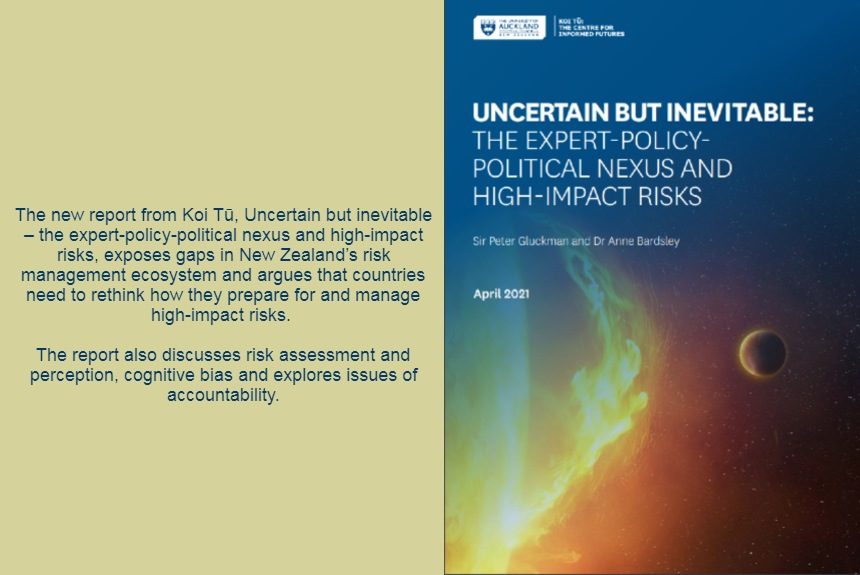Disaster risk management of threats and hazards is one of the critical responsibilities and functions of all governments.
Citizens of any country depend on their governments to protect them, society, and everything that belongs to it—infrastructure, economy, environment, and culture—from any form of disaster, either natural or unnatural.
Governments also need to adequately invest in pre-emptive measures to enhance resilience and prepare for extreme events and threats such as climate change, technological threats, and biological threats; some of these hazards will likely happen at some point, and others can quickly become crises.
Unfortunately, there is a disconnect between scientific and policy awareness and actual policy and investment actions.
The report from The University of Auckland’s Koi Tū: The Centre for Informed Futures, “Uncertain But Inevitable: The Expert-Policy-Political Nexus and High-Impact Risks”, seeks to address this gap.
According to the report, pre-emptive actions are potentially expensive and often delayed or ignored because of uncertainty that these extreme events (effects of climate change) are likely to happen within a timeframe, within our lifetime, or in a perceivable future. Thus, the risk is downplayed or ignored.
However, inactions or delays are not because of deficiencies or ability to identify hazards and assess risk but related to “human factors of communication and judgment, the nature of political and policy decision-making, and the cognitive biases and variable risk perception different actors”.
The report contrasts how private and public sectors manage accountability. The former generally have clear accountabilities when it comes to risk management, whereas the latter’s accountabilities are often spread out and often unassignable—the cause of this is attributed to the ambiguity of the risks and hazards.
Further notes from the report are as follows:
- The emergence of the misinformation age further compounds the problem and muddles risk assessment and response.
- A transparent and systemic risk identification approach will allow governments to fight misinformation and establish effective risk management.
- Governments must develop and publish a national risk register outlining the significant risks countries face and could develop into more crises.
- Following the creation of a risk register, governments should also prepare for these risks and communicate their understanding to the public and private sectors to increase awareness and public acceptance.
- The simple fact is that ignorance or denial of high-impact events can be very costly and lead to catastrophic outcomes.
Topics discussed in the report include the following:
- The challenges of high-impact rare, including the COVID-19 pandemic and the two challenges for government policy;
- Human factors and resistance to action;
- Policy and political dimensions and prioritization, as well as how governments can learn from experience and improve the process in the future.
To read the entire report, click on the link below.
Source:
Gluckman, P. & Bardsley, A. (2021 April). Uncertain But Inevitable: The Expert-Policy-Political Nexus and High-Impact Risks. Koi Tū: The Centre for Informed Futures. The University of Auckland. Retrieved from https://informedfutures.org/high-impact-risks/



Leave a Reply